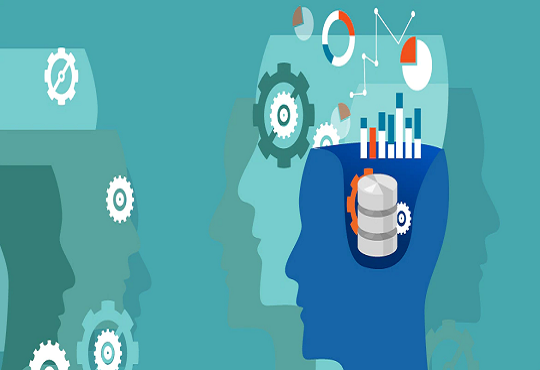Evolving Role Of AI and ML in Ensuring Cybersecurity
Abhrasnata Das | Tuesday, 16 August 2022, 16:18 IST
 As cyber threats are evolving more everyday, it has now become necessary to look at artificial Intelligence (AI) and Machine Learning (ML) to protect systems and give organizations the best security possible.
As cyber threats are evolving more everyday, it has now become necessary to look at artificial Intelligence (AI) and Machine Learning (ML) to protect systems and give organizations the best security possible.
AI is now gradually gaining ground and beginning to be applied in a variety of fields, including the automotive and medical industries. It's time for AI to aid in the defense against cyberattacks. Owing to the shutdown and technological improvements, organizations must give cybersecurity top attention. More than ever, businesses—from technology firms to social media platforms—have begun to deploy AI to thwart cyberattacks.
The IT company can allow exceptional real-time monitoring, security threat identification, and quick response by integrating AI and ML in the cybersecurity platforms. Cybersecurity systems powered by AI can respond to attacks more quickly and accurately than any human. Additionally, it might free up cybersecurity specialists to concentrate on more important responsibilities within the company.
Novel Threat Detection
AI may be used to identify online dangers and potentially criminal activity. The sheer volume of new malware that is produced every week is simply too much for traditional software systems to handle, therefore AI can be quite helpful here.
AI systems are being trained to detect malware, perform pattern recognition, and identify even the tiniest characteristics of malware or ransomware assaults before they reach the system using complex algorithms.
With the use of natural language processing, which collects data by itself by reading articles, news stories, and research on cyberthreats, AI enables higher predictive intelligence. This can provide information on brand-new oddities, cyberattacks, and defense tactics. Since hackers also follow trends, what is popular with them is continuously shifting.
AI-based cybersecurity solutions may offer the most recent information on both general and industry-specific risks, helping you to better prioritize important choices based not just on what could be used to attack your systems but also on what is most likely to do so.
Enriched Endpoint Protection
The number of devices used for working remotely is fast increasing, and AI has a crucial role to play in securing all those endpoints. Although antivirus solutions and VPNs can help against remote malware and ransomware attacks, they often work based on signatures. This means that in order to stay protected against the latest threats, it becomes necessary to keep up with signature definitions.
This can be a concern if virus definitions lag behind, either because of a failure to update the antivirus solution or a lack of awareness from the software vendor. So, if a new type of malware attack occurs, signature protection may not be able to protect against it.
“AI-driven endpoint protection takes a different tack, by establishing a baseline of behavior for the endpoint through a repeated training process. If something out of the ordinary occurs, AI can flag it and take action — whether that’s sending a notification to a technician or even reverting to a safe state after a ransomware attack. This provides proactive protection against threats, rather than waiting for signature updates,” explains Tim Brown, VP of Security Architecture at SolarWinds.
Battling Bots
Today, a significant portion of internet traffic is made up of harmful bots. Bots may be a serious threat, causing everything from account takeovers using stolen passwords to phony account creation and data theft.
Automated threats cannot be countered only by manual reactions. AI and machine learning make it easier to differentiate between good and harmful bots as well as between humans and website traffic. With the use of AI, we can evaluate enormous amounts of data and help cybersecurity teams adjust their tactics to a constantly changing environment.
“By looking at behavioral patterns, businesses will get answers to the questions ‘what does an average user journey look like’ and ‘what does a risky unusual journey look like’. From here, we can unpick the intent of their website traffic, getting and staying ahead of the bad bots,” explains Mark Greenwood, Chief Technical Architect & Head of Data Science at Netacea.
The Roadmap Ahead
AI is quickly becoming a necessary tool for improving the effectiveness of IT security teams. AI provides the critical analysis and threat detection that security professionals need to reduce breach risk and improve security posture since humans can no longer scale to adequately safeguard an enterprise-level attack surface.
Additionally, AI can lead incident response, find and prioritize hazards, and detect malware attacks before they happen. Therefore, despite any possible drawbacks, AI will advance cybersecurity and assist enterprises in developing stronger security postures.


.jpg)

